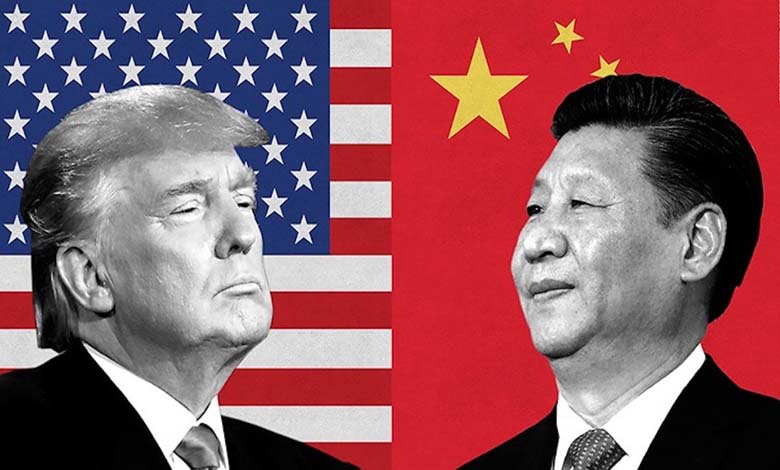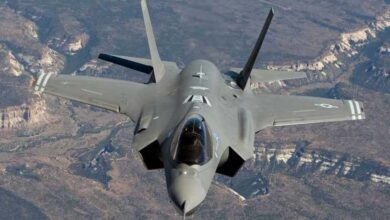The Technological Revolution and Irregular Warfare: Why is China Surpassing the U.S.?

With the rapid advancement of technology and the integration of artificial intelligence into military domains, irregular warfare has become a competitive tool among global powers.
Both China and Russia are striving to play a larger role in this type of warfare by incorporating commercial innovations into their military strategies. Meanwhile, the United States faces challenges in leveraging the private sector’s capabilities to enhance its defensive and offensive capacities, according to the Center for Strategic and International Studies (CSIS).
-
“Neural Networks” in Artificial Intelligence: What Do They Mean and What Is Their Role?
-
Artificial Intelligence in Warfare… When Machines Become Both Judge and Executioner
According to the report, the U.S. has not sufficiently utilized the commercial sector to conduct irregular warfare operations against China, Russia, and Iran. This is due to excessive caution, slow contracting procedures, and a limited understanding of technological developments.
In contrast, China is heavily investing in artificial intelligence and quantum computing while enhancing its capabilities in cyber and influence operations, posing an increasing challenge to American interests.
China’s Military-Civil Fusion Strategy
The report highlights that China follows a “military-civil fusion” strategy, integrating its military and civilian industrial sectors to bolster its defense capabilities. Additionally, China cooperates with Russia, Iran, and North Korea in developing dual-use military and intelligence technologies, complicating U.S. operations worldwide.
-
Artificial Intelligence… Can It Revive ISIS Media?
-
Technology Expert : Artificial Intelligence Can Be Used to Undermine Terrorist Groups
China’s military-civil fusion strategy is based on six key pillars:
- Integrating the defense industrial base with the commercial sector to create a unified infrastructure that fosters military innovation.
- Leveraging technological innovations across civilian and military sectors to accelerate defense development.
- Training experts in both civilian and military fields to ensure knowledge exchange.
- Identifying military requirements within civilian efforts and utilizing commercial capabilities for military purposes.
- Exploiting civilian logistics services and capabilities for military applications, including transportation and communication systems.
- Enhancing the national mobilization system to encompass all economic and social sectors in preparation for future conflicts.
-
A Nuclear-Proof Facility Ten Times Bigger Than the Pentagon… Discover China’s “Fortress”
-
Decoding China’s Enigmatic Fighter Jet: A Triple-Power Revolution in the Sky
China is also developing advanced technologies such as artificial intelligence, quantum computing, synthetic biology, and new energy sources, further complicating U.S. military operations in contested environments.
Beijing has already deployed AI-based electronic surveillance systems to enhance cyber warfare and information influence operations, including the use of big data and deepfake technologies.
Additionally, China is integrating big data and artificial intelligence into its command, control, communications, intelligence, and reconnaissance (C4ISR) network. Its information warfare strategy focuses on achieving superiority in the early stages of conflicts. Researchers from the People’s Liberation Army (PLA) have developed AI tools based on Meta’s open-source Llama model to enhance information and propaganda operations.
-
Discover the 10 Most Powerful Armies in Europe: The United Kingdom in First Place
-
Washington Accuses Two Individuals of Supplying Weapons to Iran That Killed 3 Americans
Challenges in Space and Anti-Satellite Capabilities
In 2023, China conducted 67 space launches—a record in its history—strengthening its capabilities in satellite communications, missile warning systems, reconnaissance, and electronic warfare. Additionally, China has developed anti-satellite capabilities, including jamming systems, directed energy weapons, and anti-satellite missiles.
The Role of the Commercial Sector in Irregular Warfare
During the Cold War, U.S. defense funding was primarily concentrated in organizations like DARPA. However, since the late 2010s, investment has shifted toward venture capital and private equity, creating significant opportunities for developing irregular warfare technologies.
-
High Confidence in Morocco Recognized with the Election of its Candidate as Interpol Africa’s Vice President
-
Fake Celebrity Accounts Ignite U.S. Election Race
Companies such as Microsoft, Amazon, and Google have invested in space technology, cybersecurity, artificial intelligence, and autonomous systems to support irregular operations.
Between 2013 and 2023, investments in defense technologies surged from $1.9 billion to $35 billion, with a focus on advanced computing, cybersecurity, and space technologies.
The emerging commercial sector in the U.S. and other countries presents immense opportunities for American government agencies engaged in irregular warfare. Organizations like In-Q-Tel and the Defense Innovation Unit (DIU) have strengthened ties between the government and the commercial sector, but significant obstacles to collaboration remain.
-
Warning of a “Terrorist Attack”: State of Alert in American Bases in Europe
-
“Killer Robots” and Wars… Can Humans Escape the Trap of “Bald Head”?
Reducing Risk Aversion
There is still a strong tendency within military and intelligence institutions to avoid risks when working with the private sector. Government policies and legal restrictions often hinder direct meetings with companies to understand new innovations. In some cases, government legal advisors impose unnecessary restrictions on meetings or even prevent private companies from presenting their technological demonstrations.
The report concludes that, to enhance its capabilities, the U.S. needs to restructure its collaboration with the commercial sector and overcome bureaucratic obstacles. The private sector offers advantages in innovation, flexibility, and production capacity.
Additionally, military and intelligence forces must develop new technologies in artificial intelligence, drones, and secure communication systems to effectively counter irregular threats.
-
“The White Emperor”: Discover China’s Revolutionary Sixth-Generation Fighter
-
The Ukrainian crisis through the lens of China… “This is the only solution”
-
China seeks mediation role to halt Gaza War












